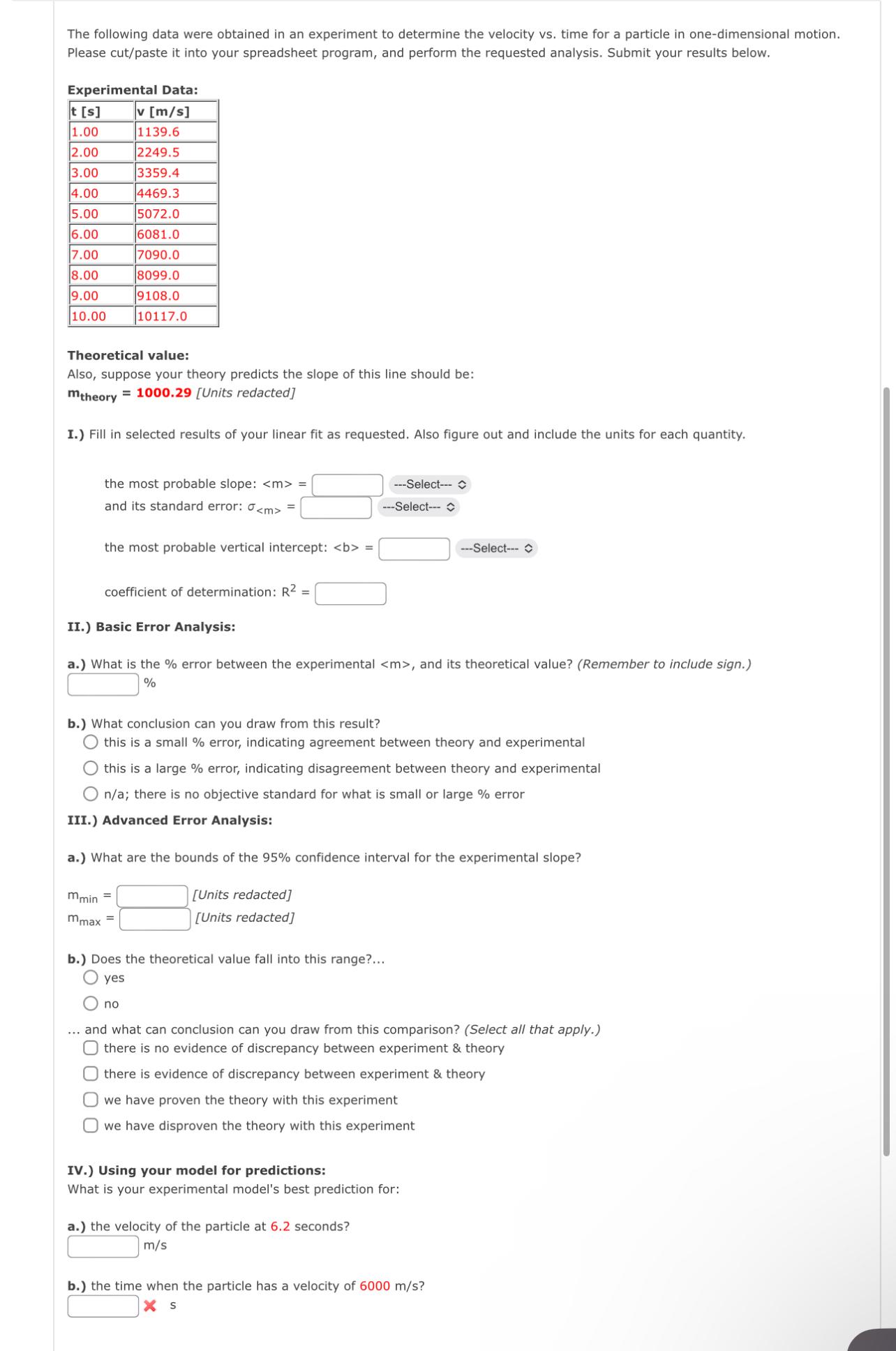Answered step by step
Verified Expert Solution
Question
1 Approved Answer
The following data were obtained in an experiment to determine the velocity vs. time for a particle in one-dimensional motion. Please cut/paste it into

The following data were obtained in an experiment to determine the velocity vs. time for a particle in one-dimensional motion. Please cut/paste it into your spreadsheet program, and perform the requested analysis. Submit your results below. Experimental Data: v [m/s] 1139.6 2249.5 3359.4 4469.3 5072.0 6081.0 7090.0 8099.0 9108.0 10117.0 t [s] 1.00 2.00 3.00 4.00 5.00 6.00 7.00 8.00 9.00 10.00 Theoretical value: Also, suppose your theory predicts the slope of this line should be: mtheory = 1000.29 [Units redacted] I.) Fill in selected results of your linear fit as requested. Also figure out and include the units for each quantity. the most probable slope: = and its standard error: = the most probable vertical intercept: = coefficient of determination: R = II.) Basic Error Analysis: mmin mmax a.) What is the % error between the experimental , and its theoretical value? (Remember to include sign.) % b.) What conclusion can you draw from this result? this is a small % error, indicating agreement between theory and experimental this is a large % error, indicating disagreement between theory and experimental n/a; there is no objective standard for what is small or large % error III.) Advanced Error Analysis: a.) What are the bounds of the 95% confidence interval for the experimental slope? = = ---Select--- C ---Select-- O [Units redacted] [Units redacted] no b.) Does the theoretical value fall into this range?... yes ---Select--- O ... and what can conclusion can you draw from this comparison? (Select all that apply.) there is no evidence of discrepancy between experiment & theory there is evidence of discrepancy between experiment & theory we have proven the theory with this experiment we have disproven the theory with this experiment IV.) Using your model for predictions: What is your experimental model's best prediction for: a.) the velocity of the particle at 6.2 seconds? m/s b.) the time when the particle has a velocity of 6000 m/s? XS
Step by Step Solution
There are 3 Steps involved in it
Step: 1

Get Instant Access to Expert-Tailored Solutions
See step-by-step solutions with expert insights and AI powered tools for academic success
Step: 2

Step: 3

Ace Your Homework with AI
Get the answers you need in no time with our AI-driven, step-by-step assistance
Get Started


